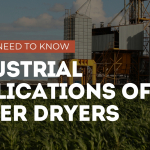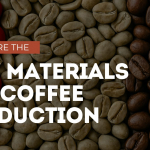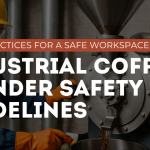Introduction: How Maintenance Impacts Your Bottom Line
Industrial coffee mills represent a significant capital investment for processing facilities, with high-capacity models often costing between $20,000 and $100,000. Proper maintenance of these sophisticated machines is not merely a recommendation—it’s a financial imperative. Studies within the food processing industry show that preventative maintenance programs can extend equipment lifespan by 30-40% while reducing emergency repair costs by up to 70%.
The correlation between maintenance practices and return on investment (ROI) is direct and measurable. Every hour of unplanned downtime can cost processing facilities thousands in lost production, with the average emergency repair costing 4-6 times more than planned maintenance. Beyond immediate costs, well-maintained coffee mills deliver consistent particle size distribution, resulting in better extraction uniformity and product quality—factors that directly impact your market position and customer satisfaction.
Let’s explore ten essential maintenance practices that will protect your investment, optimize performance, and significantly extend the operational lifespan of your industrial coffee mills.
1. Implement Systematic Cleaning Protocols
Daily Cleaning Requirements
Industrial coffee mills process organic material that leaves behind oils, fines, and residue that can degrade performance and contaminate subsequent batches. A systematic cleaning protocol is the foundation of effective maintenance.
How to Implement:
- Develop a Standard Operating Procedure (SOP) for end-of-shift cleaning
- Use food-grade compressed air (15-30 PSI) to blow out particles from grinding chambers
- Apply food-safe cleaning solutions appropriate for your mill’s material composition
- Utilize specialized brushes to access hard-to-reach areas around burrs and discharge chutes
- Schedule weekly deep cleaning during operational downtime
Why It Matters: Coffee residue contains oils that become rancid over time, affecting flavor profiles and potentially causing biological contamination. Moreover, built-up residue increases friction, requiring motors to work harder and consume more energy. Regular cleaning alone can reduce energy consumption by 10-15% while preventing the flavor degradation that impacts product quality.
2. Master Burr Inspection and Replacement
Monitoring Wear Patterns
The grinding burrs or plates are the heart of your coffee mill, directly affecting particle size consistency and production capacity.
How to Implement:
- Inspect burrs visually weekly, looking for asymmetrical wear patterns
- Measure burr thickness at multiple points using digital calipers
- Document comparative output volume and particle size distribution monthly
- Schedule replacements based on manufacturer specifications (typically after 10,000-20,000 pounds for industrial applications)
- Consider upgrading to titanium-coated or ceramic burrs for extended service intervals
Warning Signs for Replacement:
- Increased motor amperage despite normal bean input
- Noticeable temperature increase during operation
- Wider particle size distribution in output (measured with sieve analysis)
- Visible scoring, pitting, or uneven wear on burr surfaces
- Output volume decrease of greater than 15%
Why It Matters: Worn burrs create excessive heat through increased friction, negatively affecting coffee flavor. More significantly, they require up to 30% more energy to achieve the same output, directly increasing operational costs. Timely replacement based on documented wear patterns rather than complete failure prevents cascade damage to motors and drive components.
3. Motor and Bearing Maintenance
Preventing Major Component Failure
The motor and bearing assembly of industrial coffee mills operate under considerable mechanical stress and are among the most expensive components to replace.
How to Implement:
- Schedule quarterly motor inspection by qualified maintenance personnel
- Use thermal imaging to identify hotspots indicating potential bearing wear
- Implement a proper greasing schedule using food-grade lubricants meeting NSF H1 standards
- Test amperage draw monthly and compare against baseline measurements
- Maintain detailed records of operational hours for predictive maintenance
Warning Signs to Monitor:
- Unusual noises, particularly grinding or whining sounds
- Increased vibration detected through handheld vibration analyzers
- Motor casing temperature increases above manufacturer specifications
- Amperage fluctuations outside of 5% tolerance band
Why It Matters: Motor and bearing assemblies can represent up to 40% of a coffee mill’s replacement cost. Preventative maintenance costs are typically less than 5% of replacement costs annually. Additionally, motors operating with worn bearings can consume 25-30% more electricity, significantly impacting operational expenses over time.
4. Calibration Techniques for Optimal Performance
Maintaining Precision Grinding
Calibration directly affects product consistency and quality, with even minor deviations potentially impacting extraction characteristics and customer satisfaction.
How to Implement:
- Follow manufacturer-specific calibration procedures at least monthly
- Use certified calibration tools appropriate for your specific mill model
- Implement a “calibration drift log” to identify patterns requiring attention
- Train multiple operators on proper calibration techniques to ensure consistency
- Consider digital calibration systems with automatic adjustment capabilities for newer models
Why It Matters: Proper calibration ensures consistent particle size distribution, which directly correlates with extraction efficiency and flavor profile consistency. Studies show that even a 100-micron calibration drift can alter extraction yields by 2-3%, affecting cup quality and consistency. From a maintenance perspective, proper calibration reduces motor strain and energy consumption while extending component lifespan.
5. Cooling System Maintenance
Managing Operational Temperature
Industrial coffee mills generate significant heat during operation, particularly in high-volume settings. Effective cooling system maintenance prevents thermal damage to both equipment and coffee.
How to Implement:
- Clean cooling fans and heat sinks weekly using compressed air and vacuum systems
- Inspect fan motors monthly for proper operation and lubrication
- Ensure adequate airflow around equipment per manufacturer specifications
- Consider ambient temperature monitoring in your facility
- For water-cooled systems, verify proper flow rates and inspect for mineral buildup quarterly
Why It Matters: Excessive heat accelerates wear on all mechanical components, particularly bearings and electrical systems. Moreover, heat transferred to coffee during grinding can result in flavor degradation and volatile compound loss. Properly maintained cooling systems can extend component lifespan by 15-25% while preserving product quality.
6. Electrical Component Inspection and Maintenance
Preventing Catastrophic Failures
Electrical systems represent both a safety concern and a common failure point in industrial coffee mills.
How to Implement:
- Schedule quarterly inspections by qualified electricians
- Use thermal imaging to identify high-resistance connections
- Tighten all electrical connections according to torque specifications
- Verify proper grounding and test ground fault protection systems
- Keep control panels clean and free from coffee dust to prevent insulation failure
Warning Signs:
- Circuit breaker trips or fuse failures
- Intermittent operation or unexpected shutdowns
- Burning odors or discoloration around terminals
- Controller display irregularities or parameter drift
Why It Matters: Electrical failures typically result in immediate and complete equipment downtime. Beyond the direct repair costs, the production losses can be substantial. Preventative electrical maintenance costs approximately 2-3% of replacement costs annually while dramatically reducing downtime risks.
7. Vibration Monitoring and Mitigation
Identifying Problems Before Failure
Excessive vibration accelerates wear on all components and can indicate developing issues before catastrophic failure.
How to Implement:
- Establish baseline vibration measurements when equipment is new or freshly maintained
- Use handheld vibration analyzers quarterly or implement continuous monitoring systems
- Ensure proper foundation mounting and leveling during installation and after any facility changes
- Inspect and tighten mounting hardware monthly
- Balance rotating components during major maintenance intervals
Why It Matters: Vibration accelerates bearing wear, loosens fasteners, and can cause structural fatigue over time. Studies indicate that machinery with high vibration levels can experience component failure rates 2-3 times higher than properly balanced equipment. Early detection of vibration changes can reduce repair costs by up to 60% by addressing root causes before secondary damage occurs.
8. Proper Warm-Up and Cool-Down Procedures
Extending Service Life Through Operational Discipline
How you start and stop your industrial coffee mill significantly impacts long-term reliability and component lifespan.
How to Implement:
- Develop standardized startup procedures including:
- 30-60 second warm-up at no load
- Gradual feeding to prevent motor loading shock
- Temperature monitoring during initial operation
- Implement proper shutdown protocols:
- Complete grinding of all material in the system
- 30-second no-load operation to clear residual product
- Proper lockout/tagout procedures for maintenance
Why It Matters: Cold starts place up to three times more stress on motors and drive components than properly warmed equipment. Similarly, improper shutdown can leave material in the grinding chamber, which absorbs moisture and causes corrosion or biological contamination. Following proper operational procedures costs nothing but operator time while potentially extending service life by 15-20%.
9. Seasonal Maintenance Considerations
Adapting to Environmental Changes
Coffee processing facilities often experience seasonal variations in temperature, humidity, and production volume that require maintenance adaptations.
How to Implement:
- Schedule comprehensive maintenance before peak production seasons
- Adjust lubrication types and intervals based on seasonal temperature fluctuations
- Implement humidity monitoring and control measures during rainy seasons
- Consider thermal insulation for equipment during extreme temperature periods
- Develop season-specific cleaning protocols when humidity changes affect coffee properties
Why It Matters: Environmental factors significantly impact equipment performance and maintenance needs. Humidity changes affect static electricity and product flow characteristics, while temperature fluctuations impact lubrication effectiveness and thermal expansion of components. Adapting maintenance schedules to seasonal conditions prevents the 20-30% increase in failure rates commonly seen during seasonal transitions.
10. Documentation and Maintenance Logging
Building Historical Knowledge for Predictive Maintenance
Comprehensive documentation transforms reactive maintenance into predictive maintenance, dramatically reducing costs and downtime.
How to Implement:
- Develop digital maintenance logs for each piece of equipment
- Record all maintenance activities, replacements, and adjustments
- Document operational parameters including:
- Motor amperage under various loads
- Operating temperatures
- Vibration readings
- Production volumes and rates
- Analyze collected data quarterly to identify trends and predict maintenance needs
Why It Matters: Documented maintenance history allows for pattern recognition and predictive modeling that can reduce unplanned downtime by up to 70%. Data-driven maintenance scheduling optimizes component lifespan while minimizing production interruptions, directly improving overall equipment effectiveness (OEE).
Maintenance Approaches for Different Mill Types
Different grinding technologies require specific maintenance considerations:
Flat Burr Mills
- Require more frequent parallelism checks
- Benefit from regular rotation to ensure even wear patterns
- Typically experience higher heat generation requiring emphasis on cooling system maintenance
- Clearance adjustments critical for consistent particle size
Conical Burr Mills
- Lower operating temperatures but stricter alignment requirements
- Extended service intervals for burr replacement (typically 25-40% longer than flat burrs)
- More sensitive to foreign object damage requiring vigilant inspection
- Often benefit from specialized cleaning tools for conical surfaces
Roller Mills
- Require precision roller gap calibration
- Need more frequent inspection for surface pitting and scoring
- Benefit from roller surface reconditioning rather than replacement
- Typically incorporate more complex drive systems requiring specialized lubrication protocols
Essential Maintenance Tools and Equipment
Proper maintenance requires appropriate tools and equipment:
- Digital calipers (0.01mm precision) for component measurement
- Torque wrenches calibrated for manufacturer specifications
- Vibration analyzer with trending capabilities
- Infrared thermometer or thermal imaging camera
- Digital multimeter for electrical troubleshooting
- Specialized cleaning brushes and compressed air systems
- Calibration tools specific to your mill model
- Documentation system (digital preferred) for tracking maintenance history
Investment in quality maintenance tools typically returns 3-5 times their cost annually through reduced downtime and extended equipment life.
Preventative Maintenance Schedule Template
| Maintenance Task | Daily | Weekly | Monthly | Quarterly | Annually |
|---|---|---|---|---|---|
| Basic cleaning and inspection | ✓ | ||||
| Deep cleaning | ✓ | ||||
| Burr inspection | ✓ | ||||
| Burr rotation/replacement | As needed | ||||
| Motor amperage testing | ✓ | ||||
| Bearing lubrication | ✓ | ||||
| Full calibration | ✓ | ||||
| Vibration analysis | ✓ | ||||
| Electrical system inspection | ✓ | ||||
| Cooling system deep cleaning | ✓ | ||||
| Complete disassembly/inspection | ✓ | ||||
| Control system verification | ✓ | ||||
| Comprehensive performance testing | ✓ |
How Our Consulting Services Can Help
Implementing a comprehensive maintenance program requires expertise, resources, and commitment. Our agricultural machinery consulting services provide:
- Custom maintenance program development based on your specific equipment and production requirements
- Staff training on maintenance protocols and documentation
- Vibration analysis and predictive maintenance modeling
- Thermal imaging services to identify developing issues
- Performance optimization to balance maintenance costs against production requirements
- Third-party verification for insurance and certification purposes
- Emergency support and troubleshooting
Our clients typically see a 200-300% return on consulting investment through extended equipment life, reduced downtime, and improved production efficiency.
Conclusion
Industrial coffee mill maintenance is not merely a cost center—it’s a strategic investment in operational reliability, product quality, and financial performance. Implementing these ten maintenance practices creates a comprehensive approach that addresses all aspects of equipment care, from daily cleaning to long-term documentation and analysis.
The most successful processing operations understand that maintenance excellence directly correlates with market leadership. Through disciplined implementation of these practices, your facility can achieve the operational reliability that distinguishes industry leaders from followers.
Contact our consulting team today to develop a customized maintenance strategy that will extend your equipment life, reduce operational costs, and enhance your competitive position in the market.




